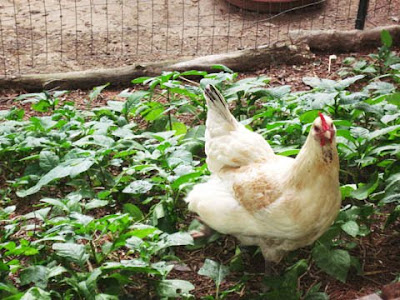 If you’re a city person like me, walking around a farm feels a bit like visiting a foreign country in, let’s say, Western Europe. It’s not so off the mark that you don’t understand it: people still drink espresso in the morning, shop at stores with recognizable names (Zara, H&M, Gucci) and entertain themselves with music you might have heard of and cinema perhaps you’ve seen. But the language is different, the food is different and European toilet paper always feels like a wad of cardboard, not Downy soft.
If you’re a city person like me, walking around a farm feels a bit like visiting a foreign country in, let’s say, Western Europe. It’s not so off the mark that you don’t understand it: people still drink espresso in the morning, shop at stores with recognizable names (Zara, H&M, Gucci) and entertain themselves with music you might have heard of and cinema perhaps you’ve seen. But the language is different, the food is different and European toilet paper always feels like a wad of cardboard, not Downy soft.Same with a farm. My very first memories of language are of farm animals. “What sound does a sheep make?’ my mother would coo.
“Baaah.”
“That’s right, and what sound does a horse make?”
“Oink, Oink”
“No, a horse?”
“Naaay.”
When I see the vegetables growing out of the ground, they are familiar to me. Yes, I eat that: corn, tomatoes, lettuce. Yes, I drink that: milk from a cow. It all makes sense and everything looks as it should. The corn on the stalk looks like the same one I smother in salt and butter at a barbeque and the milk is creamy and white, the same that goes into my morning coffee. But what about the other edible components of the farm? The ones that look entirely different from where they start to where they end up. For instance, how does that feathered chicken I see running around end up as a breaded cutlet on my dinner plate?
With the recent documentary Food, Inc. (http://www.foodincmovie.com/), we were shown the irresponsible, corporate side of farming and creating food from animals. It was alarming to see how disconnected big companies want to keep us from what we eat because of the inhumane practices involved.
There have been a few of my friend’s who have asked if everyone here on Red Wing Farm is a vegetarian. The answer is no – some are, some are not. But everyone here on this farm and from the neighboring farming school, Warren Wilson, are responsible and humane and that is exactly how they harvest their food.
So how does that organic chicken I buy in the store or the farmer’s market come to be? Well, Nicole was kind enough to invite me to Chicken Killing Class 101 so I could see for myself.
Step 1. Be Nice To Your Chicks

The very first step is to be nice to the chickens. Let them run around in the sunshine and play with their friends and feed them proper chicken food not antibiotics.
Step 2. It Has To Be Done

 I know. It sucks. But the truth is that if your going to eat the chicken… well, then the chicken has to die. These cones keep them tight inside and their jugular is slit immediately. They quickly pass out and then bleed to death. This part kind of resembles a Quentin Tarantino movie but I have to say, the chickens weren’t squawking with fear – they were far more relaxed than I would have predicted.
I know. It sucks. But the truth is that if your going to eat the chicken… well, then the chicken has to die. These cones keep them tight inside and their jugular is slit immediately. They quickly pass out and then bleed to death. This part kind of resembles a Quentin Tarantino movie but I have to say, the chickens weren’t squawking with fear – they were far more relaxed than I would have predicted.Step 3. Give Em' A Hot Bath For A Job Well Done
After they have bled to death and their heads are chopped off, they are dunked into a bath of hot water so that their feathers are loosened from their skin.
Step 4. Stick Em' In the Spin Cycle


Holding the chicken at the edge of the Feather Extracting Machine, their feet are gently taken off with a sharp knife. Then their warm carcass is placed in Permanent Press for a few minutes until their feathers are almost entirely gone.
Step 5. Get Em' Them To The Beauty Salon

 At the Poultry Salon, a team of dedicated, un-squeamish students spend about ten minutes gutting and cleaning each bird until they look exactly like what I buy in the store.
At the Poultry Salon, a team of dedicated, un-squeamish students spend about ten minutes gutting and cleaning each bird until they look exactly like what I buy in the store.Speaking of Guts? Did I have my own?

Yes. That would be me cringing (hence the funny wrinkled face), but that would also be me holding a knife and going for the jugular (everyone I know should really remember that and tread lightly in the future). I was able to muster enough guts to slit the necks of two chickens but i was waaaay too squeamish to become a beautician in the Poultry Salon.

No comments:
Post a Comment